

Pages: 1
| Posted: 26 Mar 2013 15:13 | |
|
Registered User Currently Offline Join Date: Aug 2011 |
Posts: 64 Reputation: 6 User Rank: 2 - Sprout 
|
|
I have a couple of D. deremensis 'Compacta' and for the past few months leaves in the middle of the plants begin with chlorosis at the leaf tips which eventually consume the leaf. Sometimes this is followed by necrosis, beginning at leaf tip again until it consumes the entire leaf. And sometimes the chlorotic stage is skipped entirely and the leaves just turn necrotic.
I've been chaulking this up to improper watering, but these symptoms appeared shortly after I wiped down this species with baby wipes containing xanthan gum, derived from the bacteria Xanthomonas campestris. My understanding is that xanthan gum comes from a purified form of the bacteria... which means it wouldn't (couldn't?) infect plants? Any thoughts on that? I've used these wipes on other plant species which have shown no symptoms, such as Aglaonema, D. fragrans massangeana, D. marginata, Dieffenbachia, Sansevieria. I've also thought of a Sulphur deficiency being responsible, but my experience with Sulphur deficiencies is that it usually affects the new growth, despite the nutrient being partially mobile. And Compactas are so slow-growing that I find it difficult to believe they would have a nutrient deficiency, especially where I have mine growing in low-light environments. So what do you think? Improper watering? |
|
| Posted: 28 Mar 2013 06:20 | |
|
Registered User Currently Offline Join Date: Jan 2011 |
Posts: 798 Reputation: 43 User Rank: 10 - Blossom 
|
| Is there fluoride in the tap water you're using to irrigate these plants? Sounds like classic fluoride toxicity. Or perhaps you recently repotted using a mix high in perlite? | |
| Posted: 28 Mar 2013 12:02 | |
|
Registered User Currently Offline Join Date: Aug 2011 |
Posts: 64 Reputation: 6 User Rank: 2 - Sprout 
|
| Nope. No fluoride in the water, I checked with the city, and it wasn't repotted recently. Been in this pot now for a little over a year. | |
| Posted: 29 Mar 2013 01:21 | |
|
Registered User Currently Offline Join Date: Jan 2011 |
Posts: 798 Reputation: 43 User Rank: 10 - Blossom 
|
| Could be a fungal disease. Post a photo or two and let's have a look at it. | |
| Posted: 30 Mar 2013 00:44 | |
|
Registered User Currently Offline Join Date: Aug 2011 |
Posts: 64 Reputation: 6 User Rank: 2 - Sprout 
|
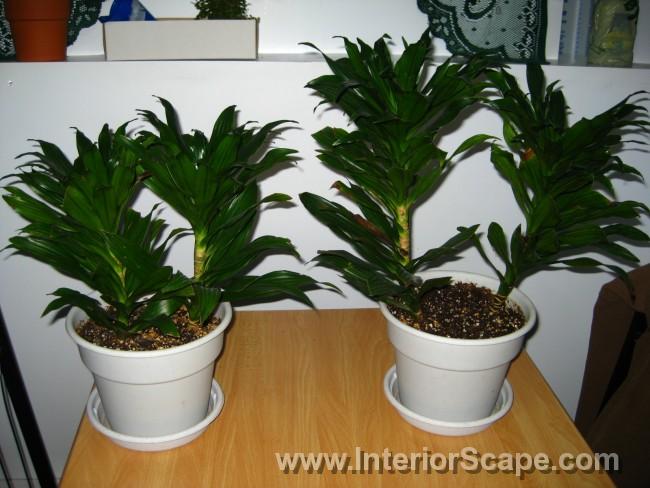
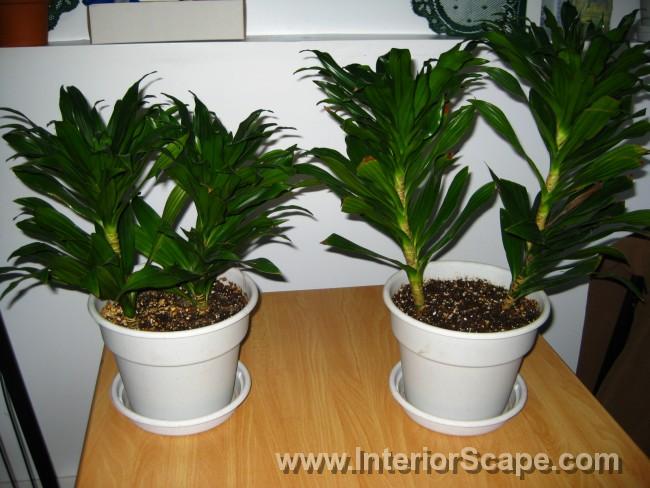
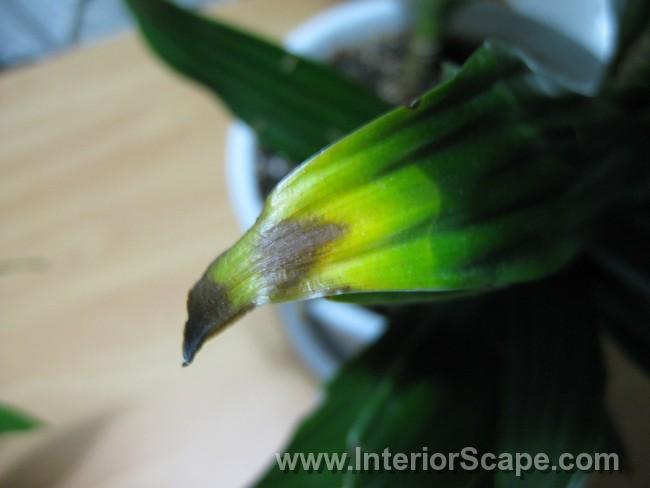
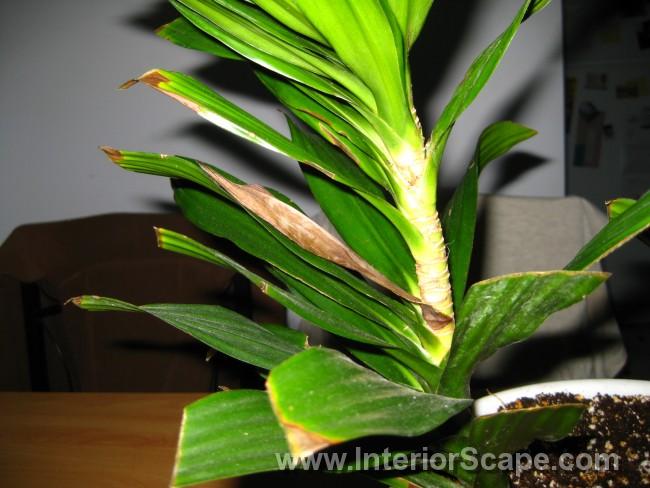
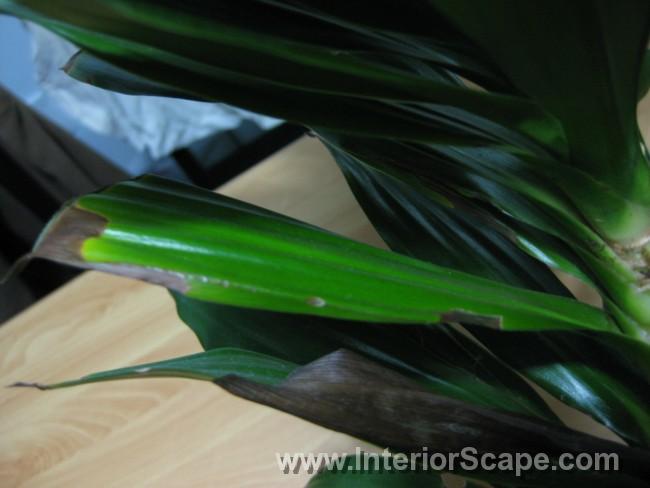
Thanks for taking a look, Clem (and anyone else that would like to chime in.) A question about a previous comment you made, Clem: why would a high-perlite mix cause such symptoms? |
|
| Posted: 30 Mar 2013 05:28 | |
|
Registered User Currently Offline Join Date: Jan 2011 |
Posts: 798 Reputation: 43 User Rank: 10 - Blossom 
|
| The terminal and marginal necrosis suggests soluble salt toxicity of some sort. When the medium is allowed to dry too much, this worsens the symptoms as the salts become more concentrated around the root hairs due to the scarcity of water that would otherwise dilute them somewhat. This is probably going to require you to replace the plants. Could also be a sign of root and stem rot of one sort or another, but as of yet no signs of it along the green stems, so I vote salts. | |
| Posted: 30 Mar 2013 05:30 | |
|
Registered User Currently Offline Join Date: Jan 2011 |
Posts: 798 Reputation: 43 User Rank: 10 - Blossom 
|
|
Perlite is known to be high in fluorides naturally occurring in the mineral used to make it. Here's an informative and helpful article about this phenomenon:
http://www.perlite.info/hbk/pg01.htm Calcium in the form of dolomite limestone obviously serves to counteract the availability of fluoride in potting media as you can see from the chart. |
|
| Posted: 06 Apr 2013 22:41 | |
|
Registered User Currently Offline Join Date: Aug 2011 |
Posts: 64 Reputation: 6 User Rank: 2 - Sprout 
|
|
You maybe right about the salts, Clem. Even though I've rarely fertilized these plants, I think I neglected to remove the slow-release fertilizer that the grower usually puts in the soil. Coupled with my tendency to neglect my own plants, the soil is usually on the dry side which adds to the problem.
The 'Compactas' at one of my accounts aren't nearly as damaged as the ones I own, but they do tend to dry out quickly. And thanks for the perlite info. Interesting stuff. |
|
| Posted: 29 Apr 2013 21:16 | |
|
Registered User Currently Offline Join Date: Jun 2012 |
Posts: 39 Reputation: 3 User Rank: 1 - Seedling 
|
|
My favorite way to deal with JC's of all types is to
1. Remove all slow release fertilizer when plant comes from grower. (I do this with all plants.) 2. Never fertilize. A yearly app of fresh soil does perfectly well. (A subject of debate, I know.) 3. Work in small amount of dolomite yearly. (This helps to counteract fluorine and chlorine in the water, as Clems link shows.) 4. Neither an overwaterer nor an underwaterer be. |
|
| Posted: 29 Apr 2013 21:19 | |
|
Registered User Currently Offline Join Date: Jun 2012 |
Posts: 39 Reputation: 3 User Rank: 1 - Seedling 
|
|
Oh yea,
5. Annual app of chelated iron. |
|
| Posted: 29 Apr 2013 21:36 | |
|
Registered User Currently Offline Join Date: Jan 2011 |
Posts: 798 Reputation: 43 User Rank: 10 - Blossom 
|
| Wrangler, you're spot on...but I fear many of us who call ourselves "interiorscapers" still wrangle with the concept of underwatering/overwatering. It's a plant-specific, situation-specific concept, and that throws a lot of people who like the comfort of "keep dry"/"keep moist". Hence the high replacement rates many 'scapers experience even after some years in the trade. | |
| Posted: 29 Jan 2014 13:19 | |
|
Registered User Currently Offline Join Date: Dec 2013 |
Posts: 16 Reputation: Unranked User Rank: 1 - Seedling 
|
| The terminal and marginal necrosis suggests soluble salt toxicity of some sort. Could also be a sign of root and stem rot of one sort or another, but as of yet no signs of it along the green stems.Landscaping Coventry | |
Pages: 1
Interiorscape.com is sponsored by NewPro Containers ![]() RSS 2.0
RSS 2.0 ![]() Atom 1.0
Atom 1.0













